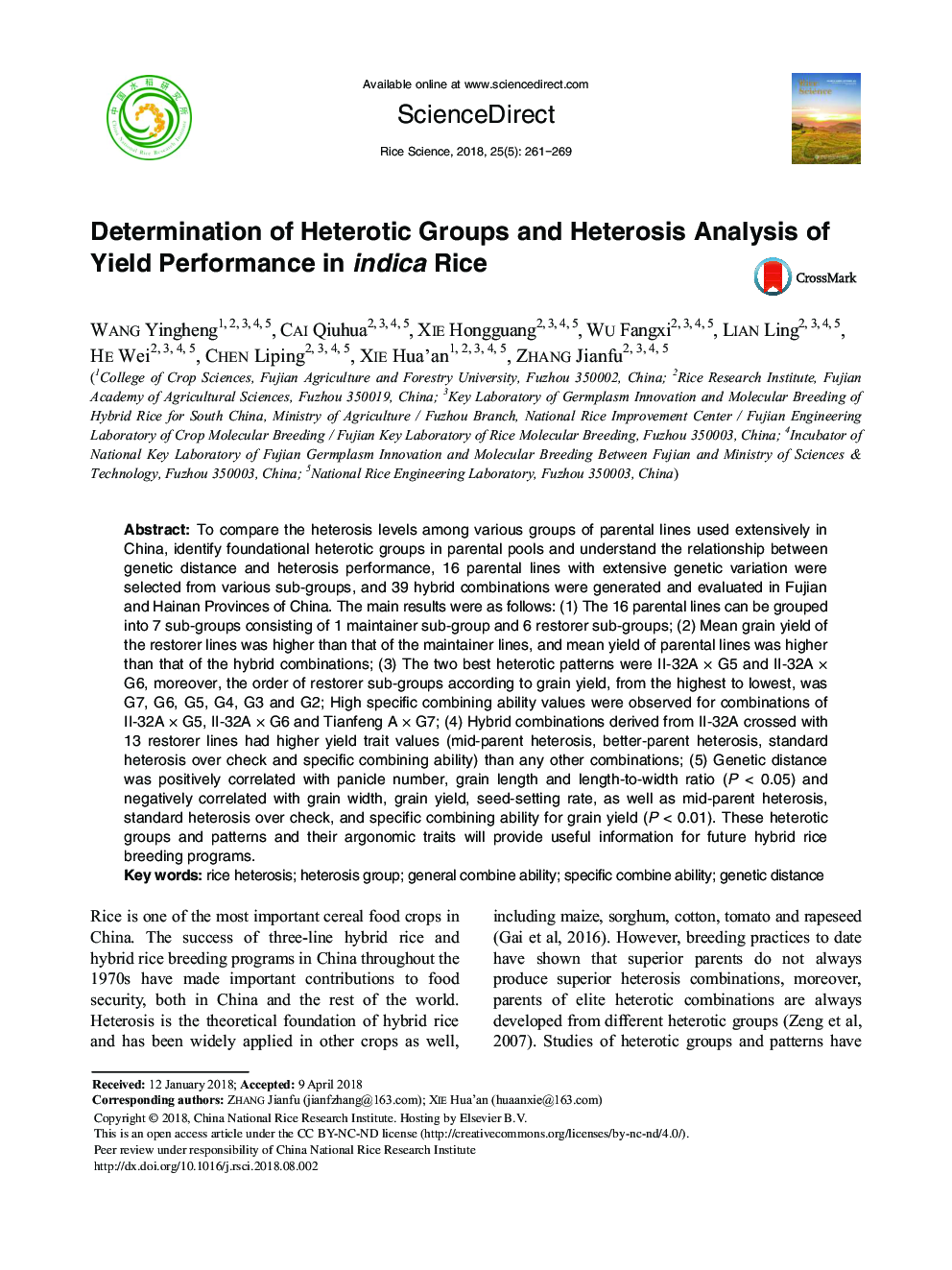| Article ID | Journal | Published Year | Pages | File Type |
|---|---|---|---|---|
| 8959370 | Rice Science | 2018 | 9 Pages |
Abstract
To compare the heterosis levels among various groups of parental lines used extensively in China, identify foundational heterotic groups in parental pools and understand the relationship between genetic distance and heterosis performance, 16 parental lines with extensive genetic variation were selected from various sub-groups, and 39 hybrid combinations were generated and evaluated in Fujian and Hainan Provinces of China. The main results were as follows: (1) The 16 parental lines can be grouped into 7 sub-groups consisting of 1 maintainer sub-group and 6 restorer sub-groups; (2) Mean grain yield of the restorer lines was higher than that of the maintainer lines, and mean yield of parental lines was higher than that of the hybrid combinations; (3) The two best heterotic patterns were II-32AÂ ÃÂ G5 and II-32AÂ ÃÂ G6, moreover, the order of restorer sub-groups according to grain yield, from the highest to lowest, was G7, G6, G5, G4, G3 and G2; High specific combining ability values were observed for combinations of II-32AÂ ÃÂ G5, II-32AÂ ÃÂ G6 and Tianfeng AÂ ÃÂ G7; (4) Hybrid combinations derived from II-32A crossed with 13 restorer lines had higher yield trait values (mid-parent heterosis, better-parent heterosis, standard heterosis over check and specific combining ability) than any other combinations; (5) Genetic distance was positively correlated with panicle number, grain length and length-to-width ratio (PÂ <Â 0.05) and negatively correlated with grain width, grain yield, seed-setting rate, as well as mid-parent heterosis, standard heterosis over check, and specific combining ability for grain yield (PÂ <Â 0.01). These heterotic groups and patterns and their argonomic traits will provide useful information for future hybrid rice breeding programs.
Keywords
Related Topics
Life Sciences
Agricultural and Biological Sciences
Agricultural and Biological Sciences (General)
Authors
Wang Yingheng, Cai Qiuhua, Xie Hongguang, Wu Fangxi, Lian Ling, He Wei, Chen Liping, Xie Hua'an, Zhang Jianfu,
